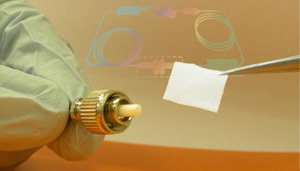Singapore researchers use Graphene as a laser locker
A group of researchers from Singapore, led by Dingyuan Tang are using a Graphene-Polymer composite as a laser locker. A laser locker is used to oscillate laser modes in phase, giving rise to short and very intense light pulses. Graphene can be used as a mode locker because it is a ‘saturable absorber’, that is, its light absorbance decreases rapidly with increasing light intensity â an essential property for passive mode lockers.

The team approached this application by introducing a graphenepolymer composite film into an erbium-doped fiber laser. Encapsulating graphene in the polymer host passivate the graphene from ambient oxygen, which prevents photooxidation and optical bleaching by high-powered lasers, says Tang.

